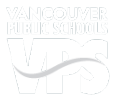If you want to know what an elementary school should look and feel like, ask a fifth-grader.
An elementary school should “feel like you’re at home and be comfortable. Because if you’re comfortable, you’re comfortable asking questions,” said Erica Kharitonenko, who then attended Truman.
“School should be inviting and have bright colors for the little kids so they don’t get bored,” added then-Ogden student Destiny Robello.
They and other students, parents, staff members, community representatives and education facility planners gathered last spring at a symposium to envision new facilities that would upgrade or replace some of the district’s oldest elementary schools.
Community participation, and creating facilities to expand the work already underway in the district’s Family-Community Resource Centers, was a key concept in the discussion. Participants also considered adaptable spaces; friendly, learner-centered environments; and integrated technology.
Said Heidi Rosenberg, a parent of former VPS students and a community member, “I don’t think many other school districts have this kind of symposium where they bring everybody together, especially students, the public, teachers and administrators. It’s just an amazing process.”
Comprehensive planning
The symposium was part of an ongoing, comprehensive facilities-planning process. District administrators began assessing school needs last fall. A community symposium held in November 2014 involved 70 staff and community members, who discussed how modern school buildings could better support teaching and learning now and in the future. An online survey in March 2015 gathered further input from staff and community members regarding school needs.
Additional symposia are being held this fall. The planning and feedback will help district leaders craft a proposal to bring more Vancouver school facilities up to 21st-century standards. With approval from the district’s board of directors, a bond measure to pay for construction and modernization could be on the ballot in the near future.
Cultures of hope
Symposium participants also considered how modernizing or rebuilding schools could infuse school cultures with hope, something that poverty expert Dr. Robert Barr called more predictive of student achievement than IQ or SAT scores.
Speaking at the symposium, Dr. Barr praised VPS. “The quality of education here is unusually strong, and it has endured from decade to decade,” said Barr. However, he acknowledged that “poverty remains an enormous challenge.”
VPS knows the challenge well. Over the last 10 years, the number of students who qualify for free or reduced-price meals has increased 15 percent. District-wide, nearly 53 percent of students now receive free or reduced-price lunches. In some schools, that figure is nearly 90 percent. And more than 700 students are homeless.
“Some of our buildings already have environments that support cultures of hope,” said Superintendent Steve Webb. “Others need hope-driven upgrades. Every student needs to feel welcome, safe and hopeful about his or her school.
This and other stories originally appeared in the October 2015 issue of Inside Vancouver Public Schools.
Building up: Levies and bonds support our students, staff and schools
- Vancouver Public Schools must consider a replacement levy this school year. If approved by the superintendent and the board of directors, the measure will be on the Feb. 9 ballot.
- This levy would replace the current levy that expires in 2016.
- Levies fund some of the costs related to operations and educational services of schools, which includes teachers and support staff, special programs and safety measures.
- Additional funding as a result of the McCleary decision has allowed the district to use levy dollars to pay for additional counselors and support staff to help struggling students.
- The district also is in the second year of planning for a future bond measure.
- Bond sales support capital construction, remodeling and upgrades of our schools.
- The last bond measure the district ran was passed in 2001.
- A new bond would be used to rebuild eight older schools and to relieve overcrowding.
- The bond also would pay for some improvements and upgrades at all other schools.
- District staff members, parents, students and members of the community have been involved in the initial planning stages and will continue to be involved as planning progresses.
#VPSsuccess
The Vancouver community has sustained its support for VPS in good and bad economic times. In February 2013, nearly 66 percent of voters approved the district’s replacement levy for maintenance and operations, and almost 62.5 percent approved the new levy for technology. The district’s history of continuous levy support goes back more than 50 years.
